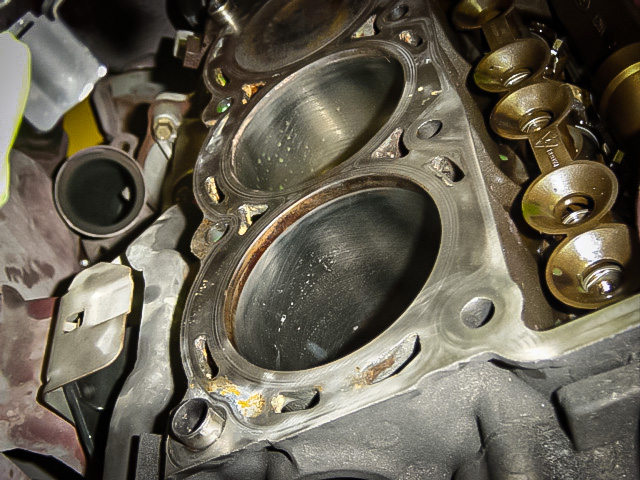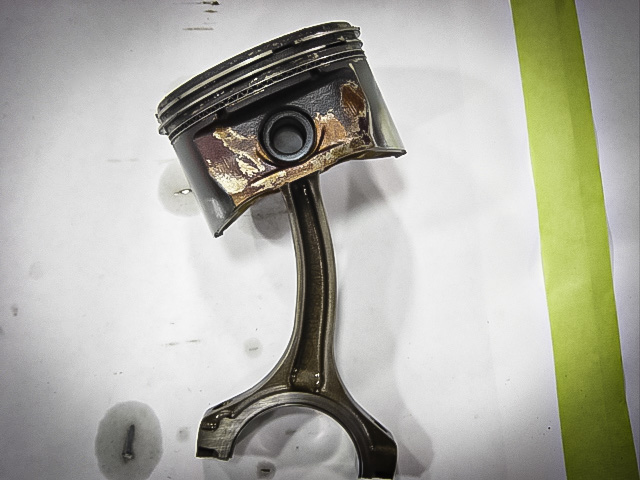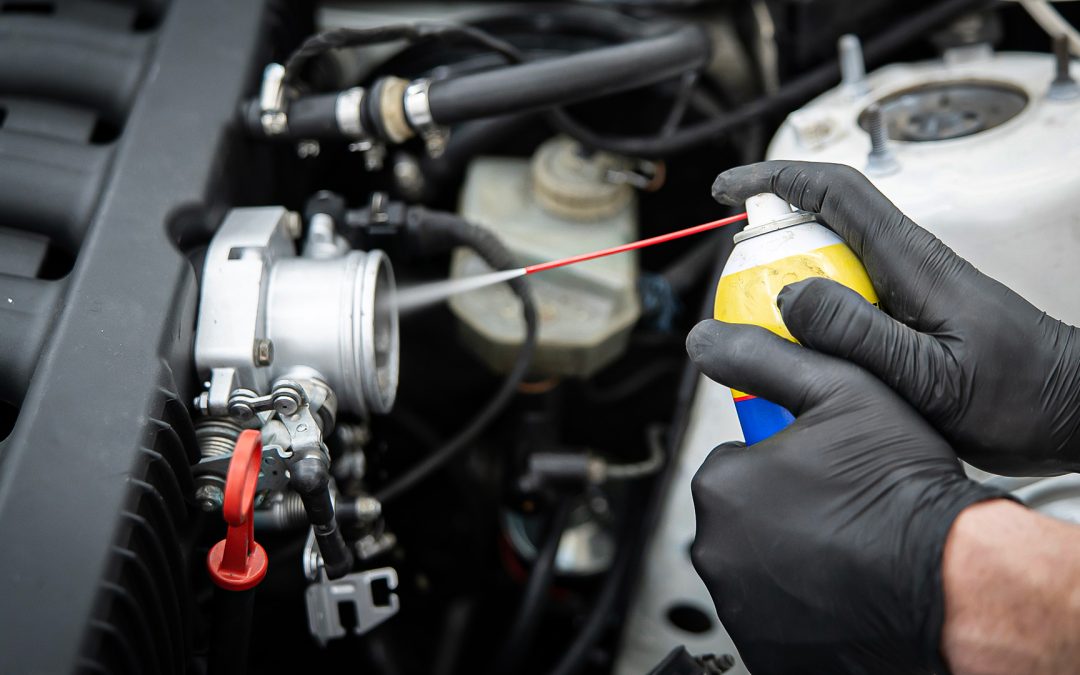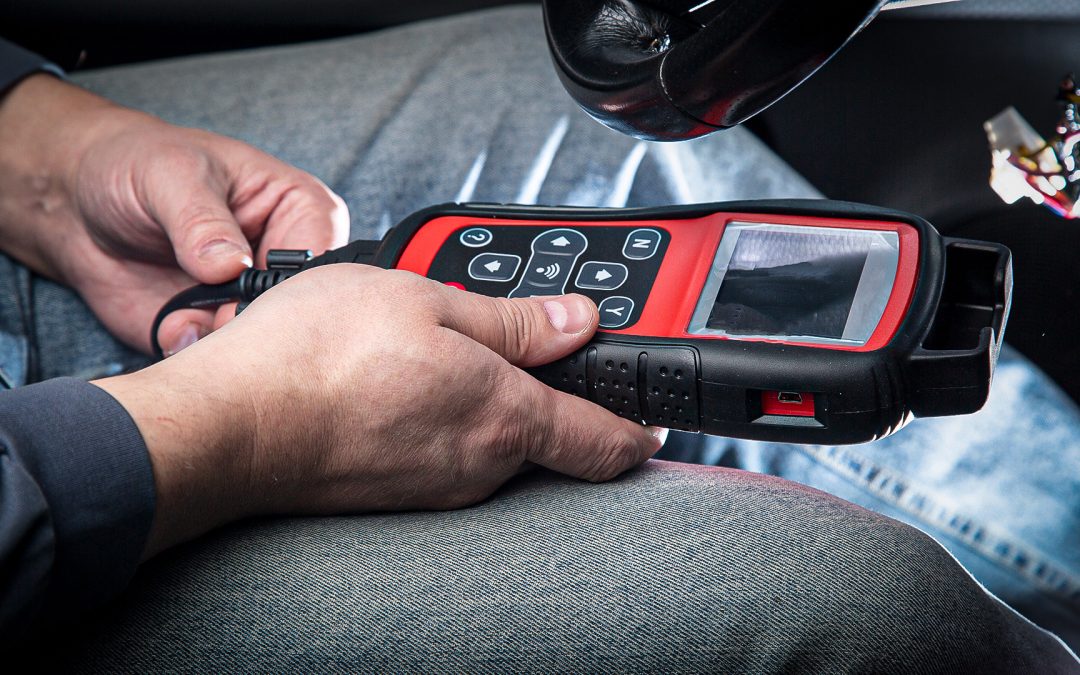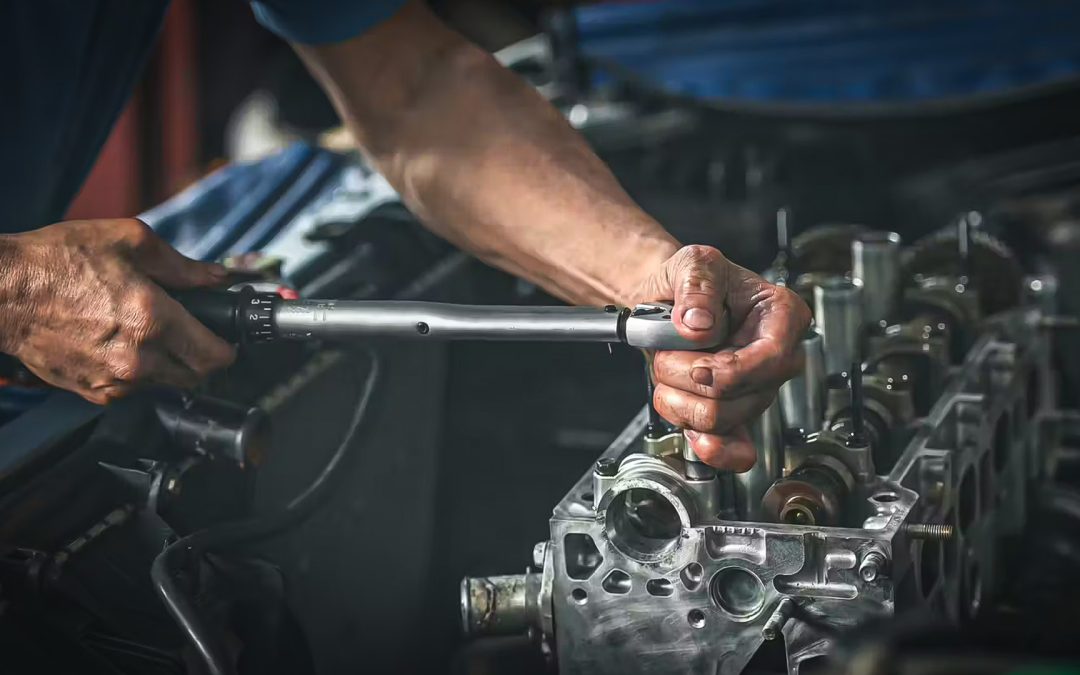Diving into number one
I removed the plug from the suspect cylinder and threaded in a traditional compression gauge. And before anyone writes me to say I should have used a pressure transducer with my scope, this story took place long before the in-cylinder pressure testing technique was invented!
When you perform this test, you need to disable the engine so it won’t start. On some vehicles, all you have to do is hold the accelerator pedal to the floor so the ECM enters “Clear Flood” mode to prevent the start.
I cranked it over and the result was a measly 54 psi. Nowhere near the 120-160 psi specification.
Next, I grabbed my cylinder leakdown tester to isolate where the loss was occurring. A cylinder leakdown tester is just a tool that allows you to pressurize the cylinder in question with shop air and has two gauges fitted. One is the air pressure entering the cylinder, and the other is the pressure being maintained in the cylinder. If the cylinder is tight, the two pressures should agree. If there’s a leak past the rings or the valves, the second pressure will be lower than the first. That difference can be considered as a percentage loss, with approximately 10% being the maximum acceptable loss. The primary advantage of this tool is that you’ll hear the air escaping. Air streaming from the tail pipe, for example, means the exhaust valve is leaking.
In the case of the Mustang, I had 90 psi going in and roughly 70 psi staying in, for a 20 psi (or 18%) difference. The air was clearly heard coming from the throttle body, so I knew I had a leak coming from the intake valves. After a conversation with both my service advisor and the customer, I removed the head and sent it out for reconditioning by our local machine shop.




